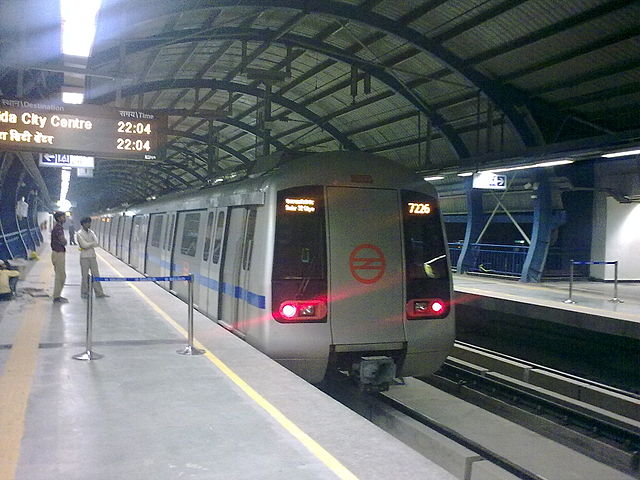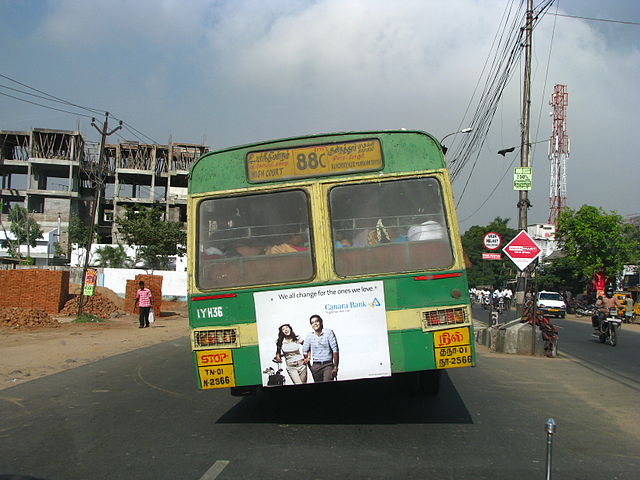Memo #329
Challenges for small Indian cities planning metro projects
By Simon Harding – sharding13 [at] gmail.com
 India is undergoing a metro boom. The country has spent US$41bn* on urban metro rail projects since 2002: The country’s six largest cities have begun constructing large-scale networks. Now smaller cities are following suit: Akhilesh Yadav, Chief Minister of Uttar Pradesh, India’s largest state, recently proposed metros for Agra, Varanasi and Meerut. However, urban planners warn of a metro ‘myth’ – seeing metro systems as silver-bullet solutions to transport problems at the expense of more equitable but less glamorous alternatives. Analysis of the Delhi metro, India’s flagship metro project, provides warnings for would-be smaller adopters.
India is undergoing a metro boom. The country has spent US$41bn* on urban metro rail projects since 2002: The country’s six largest cities have begun constructing large-scale networks. Now smaller cities are following suit: Akhilesh Yadav, Chief Minister of Uttar Pradesh, India’s largest state, recently proposed metros for Agra, Varanasi and Meerut. However, urban planners warn of a metro ‘myth’ – seeing metro systems as silver-bullet solutions to transport problems at the expense of more equitable but less glamorous alternatives. Analysis of the Delhi metro, India’s flagship metro project, provides warnings for would-be smaller adopters.
Costs are the major contention: metro systems are terrifically expensive. Capital costs for elevated metros are over ten times the cost of the equivalent Bus Rapid Transit (BRT) system, but with only twice the capacity. And maintenance costs frequently equal capital costs over the life of the network, and in the rush to promote projects, both are typically underestimated: Delhi Metro’s second phase ran US$1.62bn over-budget and will cost US$1.7bn in maintenance.
Due to these costs, and with passenger numbers 20 percent under initial projections, the Delhi Metro receives a number of subsidies. It enjoys exemption from seven taxes, interest free loans from the Government of India, the Delhi Government and the municipalities of Gurgaon and Noida, the state of Haryana and concessional loans from Japan. It also receives subsidised electricity–25 percent of its operating costs. It is not clear whether smaller cities can afford to offer similar levels of financial support or how their over-stretched power supplies will cope.
In the rush to build metro systems, serious consideration of the costs and benefits to smaller cities is overlooked and alternatives are seldom discussed. The price of 1km of elevated metro buys 35–50km of standard bus network. Many smaller cities have badly funded and overwhelmed bus networks–Lucknow has just 300 buses for 5.6m people (compared to Delhi’s approximately 6,000). Further, these bus networks are within the financial reach of the urban poor and can be relatively easily and cheaply expanded.
* author’s calculation from data at: http://www.business-standard.com/article/current-affairs/india-s-great-metro-rail-opportunity-115012000480_1.html
About the Author:
Simon Harding is studying for a PhD in Resource Management and Environmental Studies in the Institute for Resources, Environment and Sustainability at the University of British Columbia.

Are metro systems like that of Delhi the best answer to India’s growing traffic challenges? (Credit: Rameshng).

In terms of costs and efficiency, upgrading ageing and insufficient bus systems may prove the most viable route for many Indian cities (Credit: McKay Savage).
Links:
- Advani & G. Tiwari, “Evaluation of Public Transport Systems: The Case of Delhi Metro,” Proceedings of START-2005 Conference, IIT Kharagpur (2005)
- Suresh Jain, et al., “Identifying public preferences using multi-criteria decision making for assessing the shift of urban commuters from private to public transport: A case study of Delhi,” Transportation Research Part F: Traffic Psychology and Behaviour 24 (May 2014)
- Pawan Kumar, “Value of Travel Time Saved in Modal Shift from Bus to Metro Case Study: Rohini (West) Delhi Metro Station,” in Urbanization in Asia, Kala Seetharam & Guanghua Wan, eds. (Springer, 2014)
- Manchala and P.S. Vagvala, “Distortions in infrastructure development in urban transport in India: How to remedy it?”
- MPRA Paper No.22874 (2012)Mohan, “Mythologies, metro rail systems and future urban transport,” Economic and Political Weekly 43 (2008)
- Andrea Rizvi & Elliott Sclar, “Implementing bus rapid transit: A tale of two Indian cities,” Research in Transportation Economics 49 (Dec. 2014)
- Tiwari, “Urban Transport in Indian Cities,” LSE Cities (Nov. 2007)
Related Memos:
See our other memos on India and South Asia.
Comments are closed, but trackbacks and pingbacks are open.